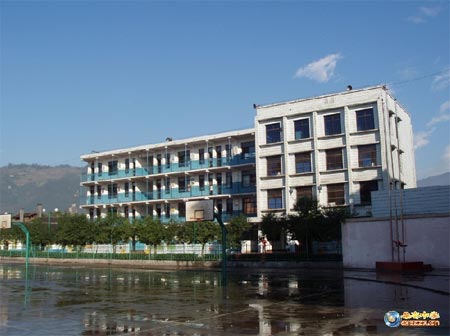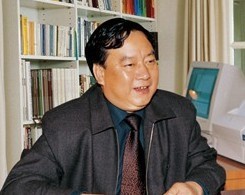Greatest lesson in their lives
By Liu Shui (China Daily)
Updated: 2008-06-02 08:12
Updated: 2008-06-02 08:12
One minute and 36 seconds after the first tremors of the earthquake hit Sichuan province on May 12, more than 2,200 students and 100 teachers of the province's Sangzao Middle School in Anxian county, Mianyang city, evacuated the school buildings and gathered at its playground.
Not a single person was hurt.
When the quake hit, the school's headmaster, Ye Zhiping, was in Mianyang. He rushed to the school on hearing of the disaster and found parts of the eight classroom buildings collapsed.
But the students, aged between 11 and 15, stood side by side on the grounds, safe and surrounded by their teachers. The only student who was not at the site was a boy who had gone home to fetch food supplies for his classmates.
|
|
Upon hearing of the close shave, Ye said he "became weak all over and cried".
Most would agree that it was largely through this man's efforts that Sangzao's students and staff were saved, even as many other schools across the province saw devastating casualties from the quake.
Anxian is close to Beichuan county, one of the worst hit quake areas. Almost all buildings around Sangzao Middle School had collapsed.
When Xinhua News Agency reporters first uncovered the story of Sangzao, it immediately became one of the hottest topics of the disaster. Some netizens dubbed Ye "the greatest headmaster in history" and people have all been eager to learn from the school's miraculous escape from the quake.
Sangzao, or mulberry and jujube, is an ordinary name. However, it is very famous among parents in Mianyang. For 13 years, Sangzao, a junior middle school, has been ranked No 1 in the county's entrance examinations for senior middle school. Parents from nearby areas all try their best to send their children to this school.
|
|
"The parents have entrusted us with their children," Ye said calmly in a recent interview with a Beijing radio station.
"We cannot let them down."
Ye said he was most worried about a lab building that was completed in the 1980s. The school did not have enough money then to hire an appropriate construction company to build it.
In 1997, when he had become the school head, he found that the reinforcement steel used in a toilet building adjacent to the main building had been eaten away by rust formed from dirty water.
Fearing that the smaller structure would affect the main building, Ye had the problem parts dismantled. A new toilet was built on the first floor.
Although the students on the higher floors needed more time to reach the toilet as a result of the changes, Ye believed they were safer.
The following year, he discovered that the floorboards of the lab building were filled with paper instead of cement. Furious, the headmaster found a formal contractor and had builders inject concrete into each floor.
In 1999, Ye also decided to replace heavy brick railings with light steel bars. Larger improvements on the building followed. All the 22 columns that bore the weight of the building were 37 cm in diameter. The headmaster asked contractors to enhance the columns into at least 50 cm in diameter.
He measured each column with his bare hands to make sure the moves were carried out.
While the school had spent 170,000 yuan ($24,504) to build the lab building, these structural reinforcements cost 400,000 yuan. The school did not have the budget for the improvements, Ye was persistent and pleaded with the local education bureau for such work whenever he had a chance.
With the money he gathered from such efforts, the headmaster hired contractors to enhance the building with its 16 classrooms, over weekends and during summer and winter vacations.
Ye was also very strict on the quality of other buildings in the school.
He was worried that the slabs of marble used for the exterior of the buildings would fall and hurt students. He asked workers to drill four holes on each marble slab, securing them on the wall with nails and glue.
None of these marble slabs fell during the quake.
Besides the quality of the classroom buildings, Ye also paid meticulous attention to safety training.
"We often hear about students stampeding during emergencies and causing serious injury ... I could not let such tragedies happen in our school," Ye said.
Starting from 2005, he had made it a rule that at least one emergency evacuation drill be held every semester. Teachers would inform students that a drill would be held during the week, but nobody except for Ye and a few other school officials knew the exact date and time.
When the drill was launched, loudspeakers would suddenly announce: "Emergency evacuation!"
Each class had its own evacuation route marked out. Two classes shared one staircase, but the students in one class had to file out in a single line. Each class had to go to a fixed position on the playground and line up swiftly.
Most classrooms had nine rows and eight columns. Teachers would tell students on the four front rows to leave the classroom via the front door, while the rest would exit from the back door.
While the students on the second and third floors had to run faster to keep the stairs clear for their schoolmates, those on the fourth and fifth floors were told to run slower so that no crowds would gather in the narrow corridors or staircase.
The headmaster was careful not to turn the drill into a competition. He feared that eager students and teachers would race ahead and cause stampedes. But he did ask teachers to time the drill, and invited everyone to discuss how to improve the practice.
At first, the students took the drill as a game. A number of teachers also thought it disrupted their classes. But Ye persisted.
He had specific requirements for the teachers: They could not leave the students alone after each class, especially at crucial moments such as physical exercises in the morning, over lunch and dinner and during evening lessons.
The teachers had to stand at certain places, such as the turns of the stairways on each floor, because children were likely to trip and fall there. The teachers would immediately help up those who stumbled and prevent stampedes.
Every Tuesday, the teachers would talk about basic safety habits on topics such as traffic rules and food hygiene.
When students gathered for meetings, the headmaster would ask the students to hold their chairs at the front, instead of dragging the chairs behind. A chair dragged on the ground could easily cause students behind to fall, he said. The other students who were unaware of the accident would walk on and more stumbling would occur.
On the day the earthquake happened, teachers and students carried out all the safety measures they had been practicing.
When the first tremor hit, the teachers called out: "Everyone under the desk!"
As the students took shelter, the teachers opened the front and back doors, in case the earthquake twisted doors and blocked exits.
As soon as the first tremors stopped, the students rushed out of the classroom. The teachers stood at the turns of the stairways and shouted:
"Faster!"
"Slower!"
Later, when some of the teachers thought about what they said then, they smiled at their contradictory instructions. But they were really afraid that if the students ran too slowly, the aftershocks would occur before they reached safer ground. At the same time, if the students ran too fast, they could have fallen and disrupted the evacuation.
More than 70 teachers lost their homes in the quake. Yet none of them abandoned their students.
China will build schools as the toughest strongholds of the country, said Liu Yandong, member of the Political Bureau of the Central Committee of the Communist Party of China, while visiting schools in Sichuan last week.
|
||
|
||
|
|
|
|

